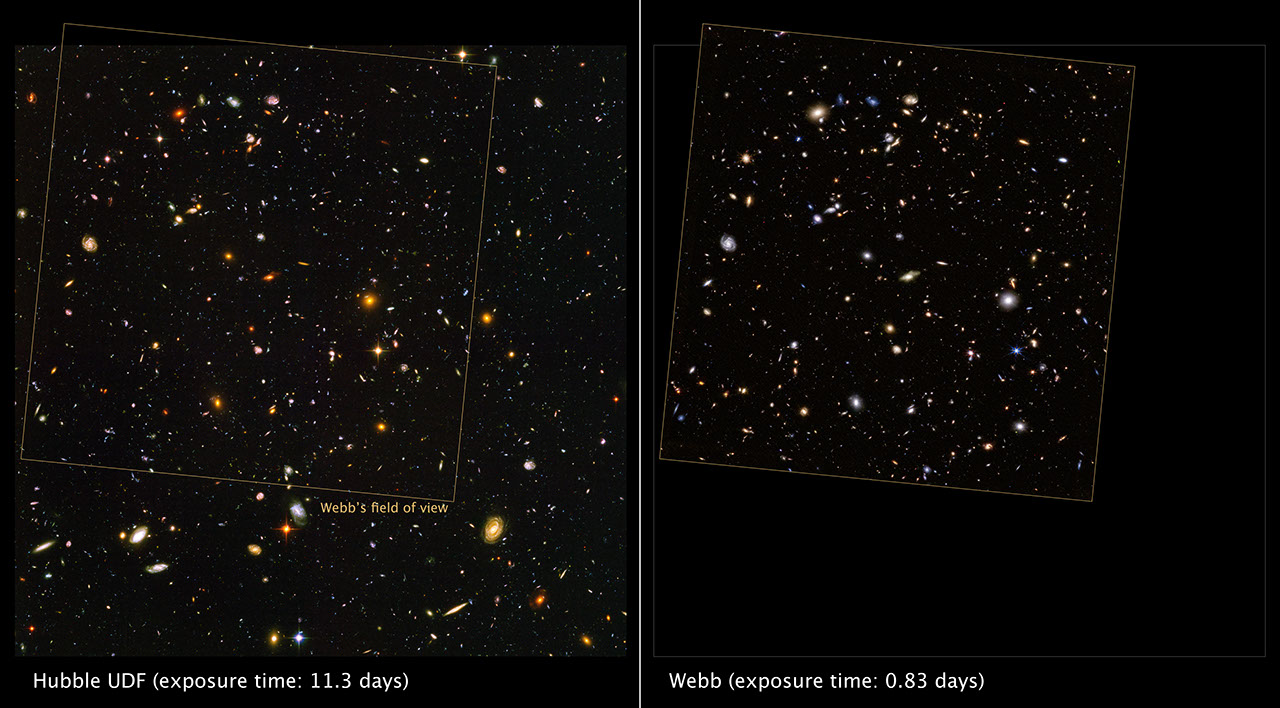1 min read
Webb and Hubble Compared HUDF (NIRCam Image)

The capabilities of NASA’s James Webb Space Telescope’s Near-Infrared Camera are on full display in this comparison between Hubble’s and Webb’s observation of the Hubble Ultra Deep Field. The left, which demonstrates Hubble’s observation with its Wide Field Camera 3, required an exposure time of 11.3 days, while the right only took 0.83 days. Several areas within the Webb image reveal previously invisible, red galaxies.
About the Object
- R.A. PositionR.A. PositionRight ascension – analogous to longitude – is one component of an object's position.03:32:39.99
- Dec. PositionDec. PositionDeclination – analogous to latitude – is one component of an object's position.-27:47:00.00
- ConstellationConstellationOne of 88 recognized regions of the celestial sphere in which the object appears.Fornax
About the Data
- Data DescriptionData DescriptionProposal: A description of the observations, their scientific justification, and the links to the data available in the science archive.
Science Team: The astronomers who planned the observations and analyzed the data. "PI" refers to the Principal Investigator.This image was created with Webb data from proposal: 1963 (C. Williams).
- InstrumentInstrumentThe science instrument used to produce the data.MIRI
- Exposure DatesExposure DatesThe date(s) that the telescope made its observations and the total exposure time.October 11, 2022
- FiltersFiltersThe camera filters that were used in the science observations.F182M, F210M, F430M, F460M, F480M
- Object NameObject NameA name or catalog number that astronomers use to identify an astronomical object.HUDF, Hubble Ultra Deep Field
- Release DateApril 12, 2023
- CreditNASA, ESA, CSA, STScI, Christina Williams (NSF's NOIRLab), Sandro Tacchella (Cambridge), Michael Maseda (UW-Madison); Image Processing: Joseph DePasquale (STScI)

These images are a composite of separate exposures acquired by the James Webb Space Telescope using the MIRI instrument. Several filters were used to sample wide wavelength ranges. The color results from assigning different hues (colors) to each monochromatic (grayscale) image associated with an individual filter. In this case, the assigned colors are: Blue: F182M, Cyan: F210M, Green: F430M, Orange: F460M, Red: F480M
Share
Details
Laura Betz
NASA’s Goddard Space Flight Center
Greenbelt, Maryland
laura.e.betz@nasa.gov
NASA, ESA, CSA, STScI, Christina Williams (NSF’s NOIRLab), Sandro Tacchella (Cambridge), Michael Maseda (UW-Madison)
Joseph DePasquale (STScI)






























